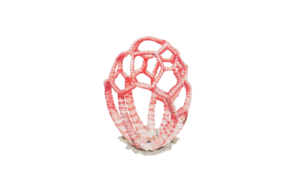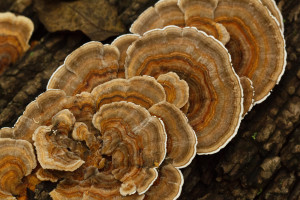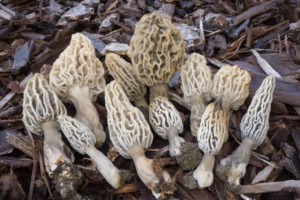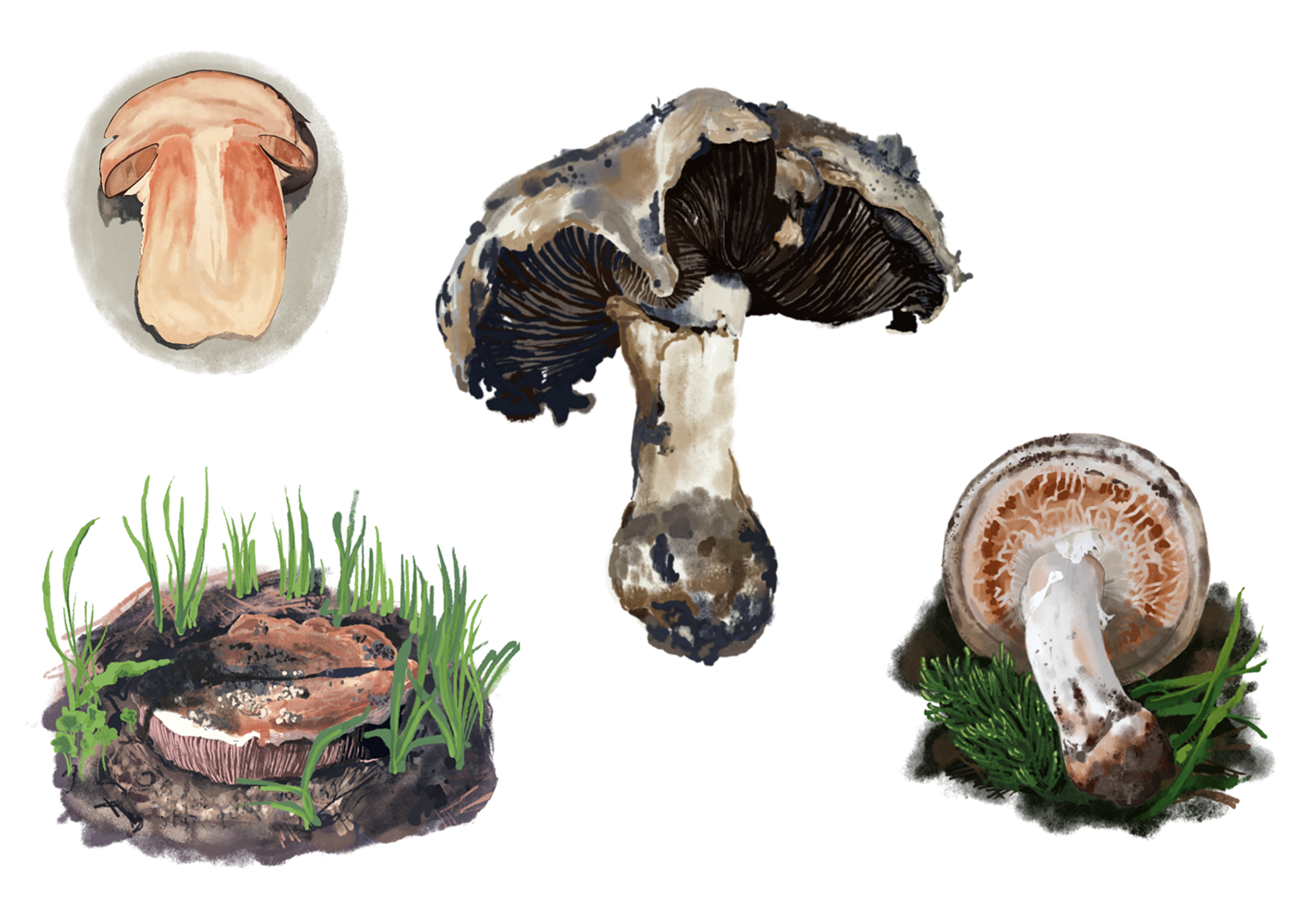
The story of Agaricus lilaceps is not an uncommon one, in the Bay Area. Originally from Monterey, where it was first described in the 1930s, A. lilaceps has been traveling up and down the California coast, spending its days decomposing things, wearing a yellow or orange veil, and mostly appearing under or near Monterey cypress. We’ve all gone through similar phases.
Its genus, Agaricus, includes hundreds of species found all over the world, with a particularly diverse population in California. Agaricus mushrooms are saprobes, meaning they survive by breaking down organic matter for food. They have a few defining physical characteristics, such as dull caps, brown gills, dark-brown spores and an often orange or yellow “partial veil”, tissue which protects the gills as a mushroom matures. The one that most people are familiar with is surely Agaricus bisporus, the common button or crimini mushroom found in grocery stores and salad bars (which are just a young version of the larger portobello mushrooms … did everyone know this except me?). A. lilaceps is pretty much along those lines. It also may stain a red-wine color when cut, and the cap can acquire a lilac tinge in cold weather—hence “lilaceps.”
What makes A. lilaceps stand out from (and above) its brethren is its stature and girth. They don’t call it the Giant Cypress Agaricus for nothing. The cap can be 6–30 cm across: up to nearly a foot. This might not seem like much, but in person, especially when it’s amongst other Agaricus, you can tell this one is different. You would need a bun the size of a dinner plate to make a burger out of this bad boy.
Size matters when identifying A. lilaceps, but location is also an important factor. A. lilaceps strongly prefers the Monterey cypress (though it is okay with some other trees, like eucalyptus), and Monterey cypress doesn’t appear just anywhere. Historically, this conifer stuck to two small areas near Monterey and Carmel on the central coast.
Now, though, these cypresses can be found up and down the coast, as their beachy, windswept look has seemingly proved popular with landscape designers and farmers (barbers are another story, none yet willing to give me “the Monterey cypress” or “sideways Kramer,” as it is sometimes called).
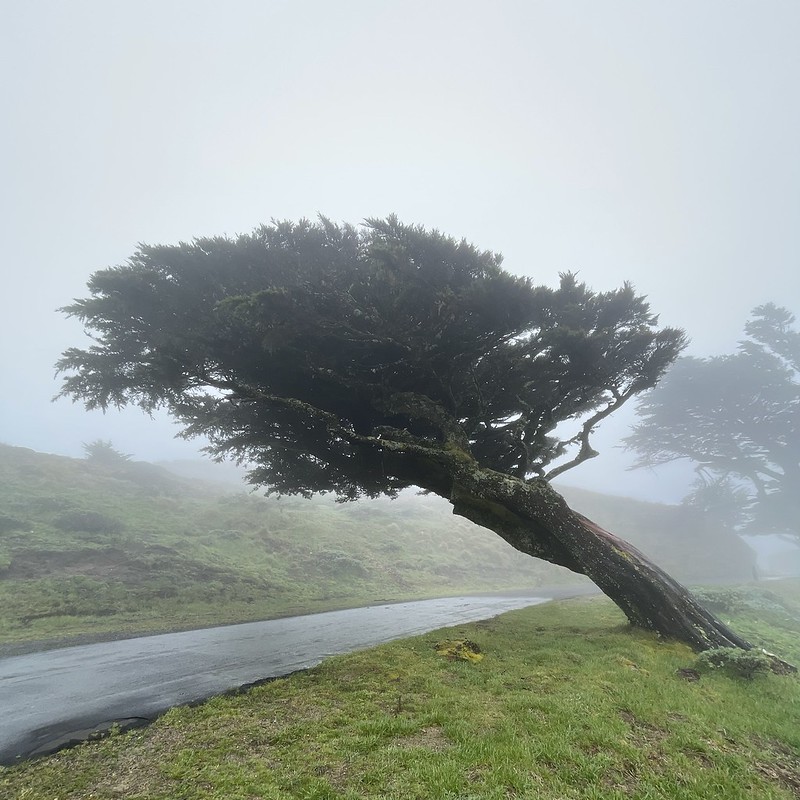
For Thea Chesney, a mycologist, keen mushroom-hunter, and U.S. Forest Service forester, who went to school at UC Berkeley, A. lilaceps is emblematic of the Central Coast. “It’s a mushroom with a pretty strong sense of place, for me.”
Lo and behold, as the cypress has spread, so too have its fungal followers, although the exact mechanism of how these hikers hitch remains a mystery, according to Rick Kerrigan, author of Agaricus of North America.
Maybe it’s us. “People are really good at moving around fungal species without noticing,” says Chesney. Which, despite being a little gross when taken out of context, rings true.
Perhaps you have seen some suspiciously produce-aisle-esque mushrooms growing in a local lawn or cow patty. Indeed, the common button mushroom, originally European, has escaped into wild places from commercial farms (is it bad to hope that Agaricus bisporus is as successful in its new environments as sourgrass has been?). But A. lilaceps isn’t farmed commercially, despite being “edible and choice!” and one of the “meatiest of all edible mushrooms” (or so renowned expert David Arora judged them in Mushrooms Demystified. He also says to cook it thoroughly). So that can’t be it.
Maybe it flew. Many mushrooms migrate by releasing spores into the air, where they float around until they land in a hopefully agreeable environment. That’s what fruiting bodies (the mushrooms we see above ground) are for—they’re spore-dispersal machines. In a 2012 study conducted at the Point Reyes National Seashore, scientists determined that spores could travel many miles, but that their success at making new mushrooms greatly decreased the farther they traveled from their source. Lead author Kabir Peay, a Stanford associate professor of biology and earth systems, says, “The longer the time scale, the more likely that you would get one of these what you would call a long-distance dispersal.” Peay notes that there are even plausible theories of spores making successful transoceanic flights.
Or maybe the fungi has just been traveling around California in soil brought along with the cypress. When Monterey cypress is propagated from seeds or stem cuttings, there isn’t much soil for A. lilaceps to hide in. But even a tiny bit could do it. Or spores could stick to the seeds. Peay lends some credence to this possibility: “When people go out and plant Monterey cypress,” he says, “they are actually moving soil.”
Chesney wonders if A. lilaceps might be an endophyte—an organism that lives within its host plant. Not necessarily a parasite like Cordyceps, the HBO-famous fungus that turns ants into zombies, but something less malignant and more simpatico, just living its life “within and between the cells of the cypress, until the needle cluster or bark or whatever tissue it is ends up shed from the tree,” Chesney mused.
Peay thinks spore dispersal is the likeliest answer. “People have long assumed that the terrestrial surface is just blanketed in fungal spores,” he says, just waiting for the right environment to happen around them. But he wouldn’t rule out the endophyte idea, though it’s undocumented. There are “a lot of fungi that have some kind of endophytic phase of their life,” he says. “And if it’s endophytic, it’s possible it’s moving around in seeds.”
Here, we start to brush up at the edge of the unknown, a familiar place for mycologists. But technological advances like DNA sequencing are giving them tools that could finally answer questions about how mushrooms move, Peay says. They can find fungi in the soil—even ones that haven’t produced visible mushrooms above ground—then analyze how related they are to fungi elsewhere, and use that information to try and suss out their paths.
And who knows where that path, however it is traveled, will take our intrepid explorers? Maybe they are ready to leave the comfortable climes of coastal California and travel abroad. Kerrigan mentions that cypress plantations around the world are “routinely noted to ‘pull’ rare local species of Agaricus out of the air, and they become regular features of these planted cypress groves.” According to Peay, all it may take is enough time and a friendly updraft to launch our unlikely hero into the air. Stay tuned over the next many thousands of years.

